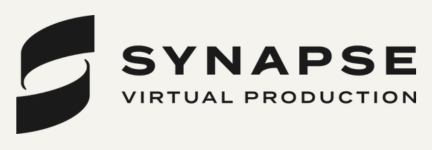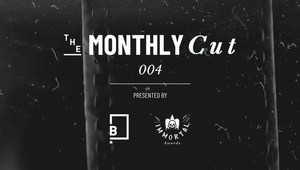
Short-Form Content Has “Completely Transformed” Production

Industry leaders say demand for fast, short-form content on platforms like TikTok and Reels is changing the way advertising productions are planned and executed.
As production timelines become increasingly compressed, We Are Social APAC CEO Suzie Shaw says her company has had to revisit its creative approach.
“Short-form has completely transformed the way we approach production,” Suzie says.
“Timelines are dramatically compressed, and agility is non-negotiable. Teams need to be fluent in platform culture: knowing what’s trending, what’s fading, and what’s about to pop.
“Clients are asking for faster timelines, more variations, and higher responsiveness.
There’s less focus on refinement and more on being present and culturally on point. But it only works when agencies and clients are working in a close, collaborative partnership.
“We’ve had to redefine what ‘creative standards’ mean in a social-first world. It’s no longer about polish, it’s about relevance, cultural fluency, and scroll-stopping power. When you shift your perspective, being raw or scrappy isn’t a compromise: it’s a smart, strategic choice.
“It’s a whole new language.”
TikTok Aesthetic Reaching Traditional Channels
Amy Bradshaw, TikTok AUNZ’s newly-promoted general manager, global business solutions, tells LBB that as the world adjusts to short-form vertical media sites like hers, advertisers have changed the way they approach marketing on the platform.
“Advertisers have fundamentally shifted how they approach marketing on TikTok,” Amy says.
“Rather than just adapting existing assets, the most effective brands are now ideating for TikTok from the start, creating content that’s native to the platform and rooted in collaboration with creators.
“This combination of both a brand-driven and creator-led approach not only helps brands show up in a way that feels authentic to the community, but also enables creativity at scale through TikTok’s tools and talent.
“Brands are also investing in fit for purpose creative on the platform, utilising AI-powered tools like TikTok Symphony to achieve both the quality and quantity needed to drive high-performing campaigns.”
In many instances, clients are expecting TikTok-style ads even for traditional media buys like TV or cinema.
“It’s a natural evolution,” Suzie explains. “Audiences have been conditioned to expect immediacy, intimacy, and personality in all content, no matter the channel. TikTok-style content cuts through in a way that traditional formats sometimes can’t.
“We’re seeing clients apply that same aesthetic to TV and cinema for a more human, engaging impact.”
But it doesn’t need to be about choosing between polished and raw content, Suzie insists.
“It’s about translating your brand identity into a format that feels native. Often, the best-performing work strikes a balance between brand polish and creator-style authenticity. It’s about fluency in both aesthetics and knowing when to lean into each.”
She believes we are seeing a split in ad production -- high-end hero films for brand prestige, and lo-fi content for performance marketing. And the split is increasingly intentional.
“Hero films still serve a valuable role in building emotional connection and brand equity. But lo-fi, reactive content is what performs in-feed, in real time. The best brands invest in both, keeping a unified voice across different formats.”
“It Doesn’t Really Look Right” On Landscape Cameras, Monitors, TVs
Haydn Kerr, executive creative director at DDB Tribal Aotearoa, sees the distinction as blurrier.
“There’s a role for lo-fi content in branding, and there’s a place for glossy film in performance placements, especially when you want to sell an expensive, beautiful product,” he explains.
“It’s not as simple as raw equals good, glossy equals bad. Some fashion and tech brands make amazing glossy content which works brilliantly on platforms. And there are times when glossy is the right choice -- like a Samsung mobile launch when you are selling a product that creates amazing video.
“There used to be only one way to make an ad, but now we’ve got a whole spectrum of different production modes to choose between, depending on the needs of the creative, and the media schedule.
“If it’s mobile led, we will shoot vertical first -- and every frame will be designed for 9:16. If it’s a mix of mobile and traditional, we may shoot landscape, and have a different camera team shooting vertical with different scripts that are bespoke for the channel. If it’s more traditional, we will crop the landscape footage for vertical placements, but this isn’t always the right idea.
“The secret is having an idea that can be done brilliantly within the production limitations. I’ve seen $3,000 and $30,000 shoots produce amazing results, because the idea was the right shape. But then you hear about $500,000 shoots failing, because the concept was too ambitious.”
Shooting vertical video for brands is not, however, without its challenges -- especially for teams used to working in horizontal content.
“The issue is that the production industry is built around traditional, landscape video -- the camera shoots landscape, the editor works on landscape monitors, the client reviews the outputs on landscape TVs,” Haydn says.
“Vertical crops look a bit weird and unsatisfying on landscape screens. It doesn’t really look right – until it’s on the screen in your hand.”
Suzie also sees the technical challenges of shooting vertical video as requiring a different approach to framing, pacing, and editing.
“You’re designing for the thumb, not the widescreen, and you only have seconds to land your message,” she says. “Add to that the constant evolution of platform specs and safe zones, and it becomes clear that vertical demands its own production playbook.”
Vertical content exists in its own ecosystem, and as such, also demands its own playbook when it comes to timelines.
Daniel Young, group managing director of consumer PR, social, and influence at Ogilvy PR Australia, says trend-based content is behind shrinking production timelines.
“The biggest impact on production timelines relate[s] to reactive and trend-based content where production planning moves from days and weeks to hours. We’ve worked with our clients to align on agile production processes, rapid content prototyping, and streamlined approval processes to deliver against these objectives.
“For a long time, social was treated as a dumping ground for creative assets that were produced for other channels. These days, there is increasing recognition of the role and impact of social and a move towards social first creative and assets that are fit for platform. Brands are, as a result, seeing better performance in social at all layers of the funnel, which is driving increasing investment in social as a primary brand building and commerce medium.”
Content with high production values can still perform well in social, Daniel says, but it’s “less about the gloss and more about the way that messaging and branding is presented.”
“When working with lo-fi content and compressed timelines, the emphasis shifts from branded assets to on-brand content where tone, style and distinctive brand assets play a more important role in realising the brief,” he says.
Shifting Budgets, and the Directors Making TikTok Series
As timelines shrink, production budgets have been up in the air -- with production companies conscious of now needing to do additional shoots for the same fee. But Haydn believes there are many reasons behind shrinking production budgets, and organic content is not a leading cause.
“We’ve also seen some production budgets rise because we’ve needed to make content for traditional, landscape placements, as well as the additional content that has to be made for vertical channels,” he says.
Suzie also notes that while brands may shift budgets, they aren’t necessarily cutting them.
“They are reallocating spend toward more agile, creator-driven content that drives better engagement,” she says. “It’s a move from scale to cultural relevance.”
What’s for certain is vertical production has already changed the way young directors and producers develop their crafts and careers. Mint Films director Hannah Lehmann began her career with ‘The Out There’, a series of Instagram shorts, preempting the introduction of Reels.
"I made one-minute episodes because I believed in the format, even if no one was doing it yet," she says. "Every upload was an experiment in how to tell a complete story.”
That willingness to experiment led to her breakthrough digital series ‘Two Sides’, which earned an Australian Directors’ Guild award and a Streamy Award.
Supernormal director Liv McClymont has also found success in the format, with ‘The Sender’ currently releasing on TikTok and Instagram.
“The most popular apps young people are using are TikTok, Instagram, and YouTube,” Liv says. “We made it specifically for those platforms. So we decided to make it a fully vertical series, and wrote it with those platforms in mind.
“What you're allowed to have on those platforms … there are lots of parameters that are quite strict, and it was whirlwind, but it was amazing, because we ended up making a product that is so specific for a specific audience who are telling us in real time how much they're enjoying it.”















